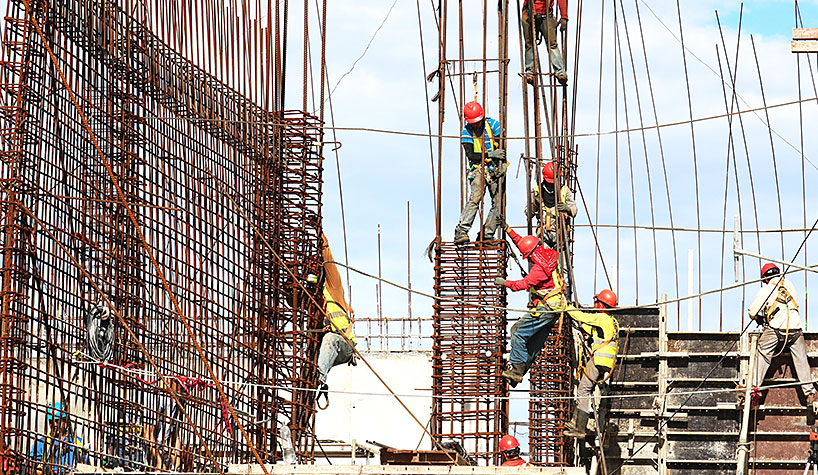LONDON—The global construction industry posted its slowest pace of growth in a decade in 2019, dropping to 2.6%, according to data and analytics company GlobalData.
The sluggish performance was primarily due to weakness in a number of advanced economies, including the U.S., the U.K. and Australia. However, GlobalData predicts that growth will edge up to 3.1% in 2020—in part driven by a projected improvement in the global economy. This, in turn, relies on improvements in financial market sentiment and a stabilization in some of the large currently troubled emerging markets.
The U.S. and Canada
GlobalData forecasts that construction output in the U.S. will recover to grow by 0.6% in 2020, following a contraction of 1% in 2019.
The outlook for the U.S. construction industry is looking slightly brighter in 2020 due to a recovery in residential construction and continued investment—especially in the transport and energy and utilities sectors.
Meanwhile, Canada’s construction output growth is expected to recover to 0.9% in 2020, improving from an estimated drop of 1% in 2019.
Following several months of declines, Canada’s housing market finally appears to be coming out of recession thanks to relatively low borrowing costs, strengthening consumer spending and record levels of immigration.
The U.K.
The U.K. will be a key focus market in 2020, with uncertainty over Brexit negotiations continuing to constrain the pace of investment in new construction projects.
“The decisive outcome of the December 2019 general election will provide the industry with confidence that the new government will be in a strong position to push through its policy agenda, particularly on the vital issue of the U.K.’s exit from the EU,” said Danny Richards, lead economist, GlobalData. “However, there will still be significant challenges ahead as the industry will need to adjust to operating outside of the EU under new trade and investment deals.”
India and Brazil
Renewed economic weakness and a liquidity crunch have heavily impacted construction activity in India, particularly in the residential sector, with reports of increasing numbers of new developments being put on hold as developers struggle to secure funding to reach completion.
“Although a bailout fund has been announced, further support could be required in 2020 to boost confidence and prevent a prolonged decline in the Indian construction market,” he said.
After five consecutive years of contractions, the construction industry in Brazil returned to growth in 2019. In 2020, construction growth is expected to accelerate to 2.2% as record low interest rates, and a more favorable economic and investment environment, further boost domestic demand and business confidence across the country.
Turkey
“Turkey’s construction industry is expected to recover in 2020 thanks to the government’s focus on developing transport, residential and energy infrastructure, as well as investments under its 11th five-year development plan 2019-2023,” said Richards. “The government aims to boost economic growth by 2023, under which it aims to build 8,300 miles of new roads, and 3,500 miles of new highways by 2023.”
The Philippines
The pace of construction growth is expected to pick up in 2020, rising to 8%, having weakened in the first half of last year owing to a four-month delay in the enactment of the 2019 budget. The country’s construction industry is set to benefit from the revitalization of a large-scale infrastructure investment program.
Ethiopia, Egypt and Ghana
Economic growth in Ethiopia will continue to support the expansion in construction, while the Egyptian government is planning to boost capital expenditure with a focus on the power and transport sectors. Ghana, a small politically stable emerging market, is accelerating growth in infrastructure investment.

